The Revolting Racism Of Roald Dahl
How the Oompa Loompas were originally black, and enslaved
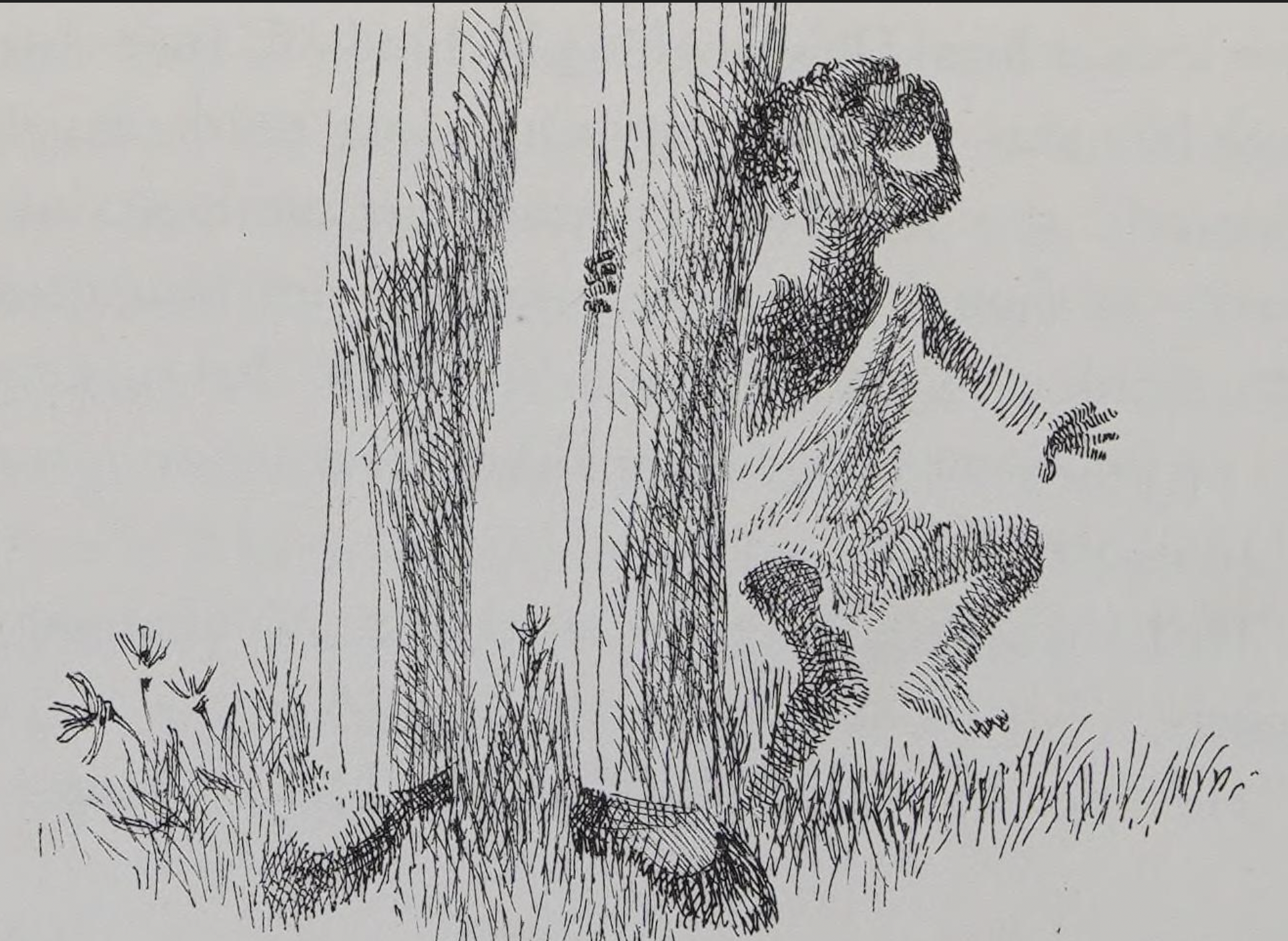
In the original Charlie And The Chocolate Factory, the Oompa Loompas were black. Specifically, black and enslaved. This was not some obscure edition, this was Roald Dahl’s most famous book at the peak of its popularity. I have excerpted the most horrible bits below, and the images are absolutely revolting. I am sorry, but prepare to have your childhood blown away.
You’ll see a black person dancing at a white man’s foot. You’ll see black people being transported in boxes, their arms and legs poking out. You’ll hear Veruca Salt asking if she can take a black person home to keep. And then you must understand that the book was published this way for nearly ten years, until 1973 (!). What the actual fuck. This is Charlie And The Chocolate Factory, as the author intended it. Roald Dahl was racist AF.
Imported Direct From Africa!
Charlie And The Chocolate Factory contained, and I quote,
“Pygmies they are! Imported direct from Africa! They belong to a tribe of tiny miniature pygmies known as the Oompa-Loompas. I discovered them myself. I brought them over from Africa myself — the whole tribe of them, three thousand in all. I found them in the very deepest and darkest part of the African jungle where no white man had ever been before.”
Read this and remember that it was read in classrooms in the 1970s, not the 1870s. Black people, being shipped across the ocean.

Roald Dahl actually wrote ‘packing cases with holes in them’. Men, women, and children transported like cargo. Like in the slave ships. He wasn’t being very imaginative. This was real.
“So I shipped them all over here, every man, woman, and child in the Oompa-Loompa tribe. It was easy. I smuggled them over in large packing cases with holes in them, and they all got here safely. They are wonderful workers. They all speak English now. They love dancing and music.”
Roald Dahl just wrote a description of human slavery, with the added racist Sambo trope about it all being OK because they sing.

I’ll go on, or more specifically, Mr. Dahl will. Early in the book, Grandpa Joe points out that the Wonka Factory has no workers, and what a mystery this was. But when Charlie went in he found out. The mystery was slavery.
Enslavement
I say slavery because it’s absolutely clear that the Oompa Loompas are not paid. The argument is that they liked working for cacao beans, but you only hear this from Willy Wonka. You never hear from the Oompa Loompas themselves, besides singing. A raping, torturing American enslaver could just as easily take you through the plantation saying everything is fine, look how they sing!
The book also spouts the colonial nonsense that this was all for the betterment of colonized people. Charlie And The Chocolate Factory literally has a white man in a pith helmet counseling a black man that it would be better to leave the place cacao beans are from to work in a factory for cacao beans.
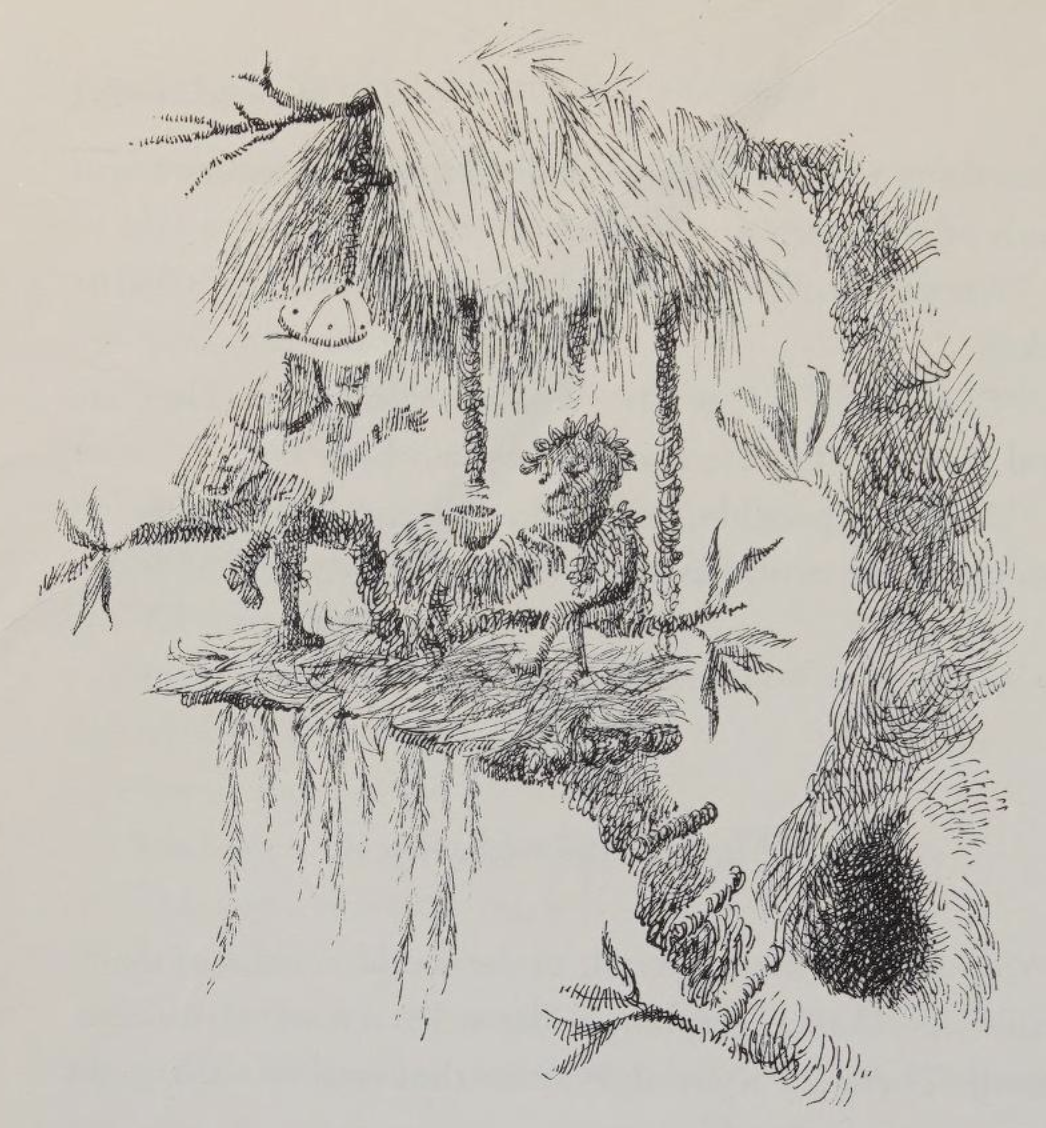
Throughout the whole book you only hear Wonka’s frankly absurd explanations, because no Oompa Loompa ever explains themselves. They were dehumanized black people, possessing language only as a curiosity, singing only as a caged bird might sing.
There is one frankly eerie story of an Oompa Loompa that escapes, after Wonka performs a human experiment on him.
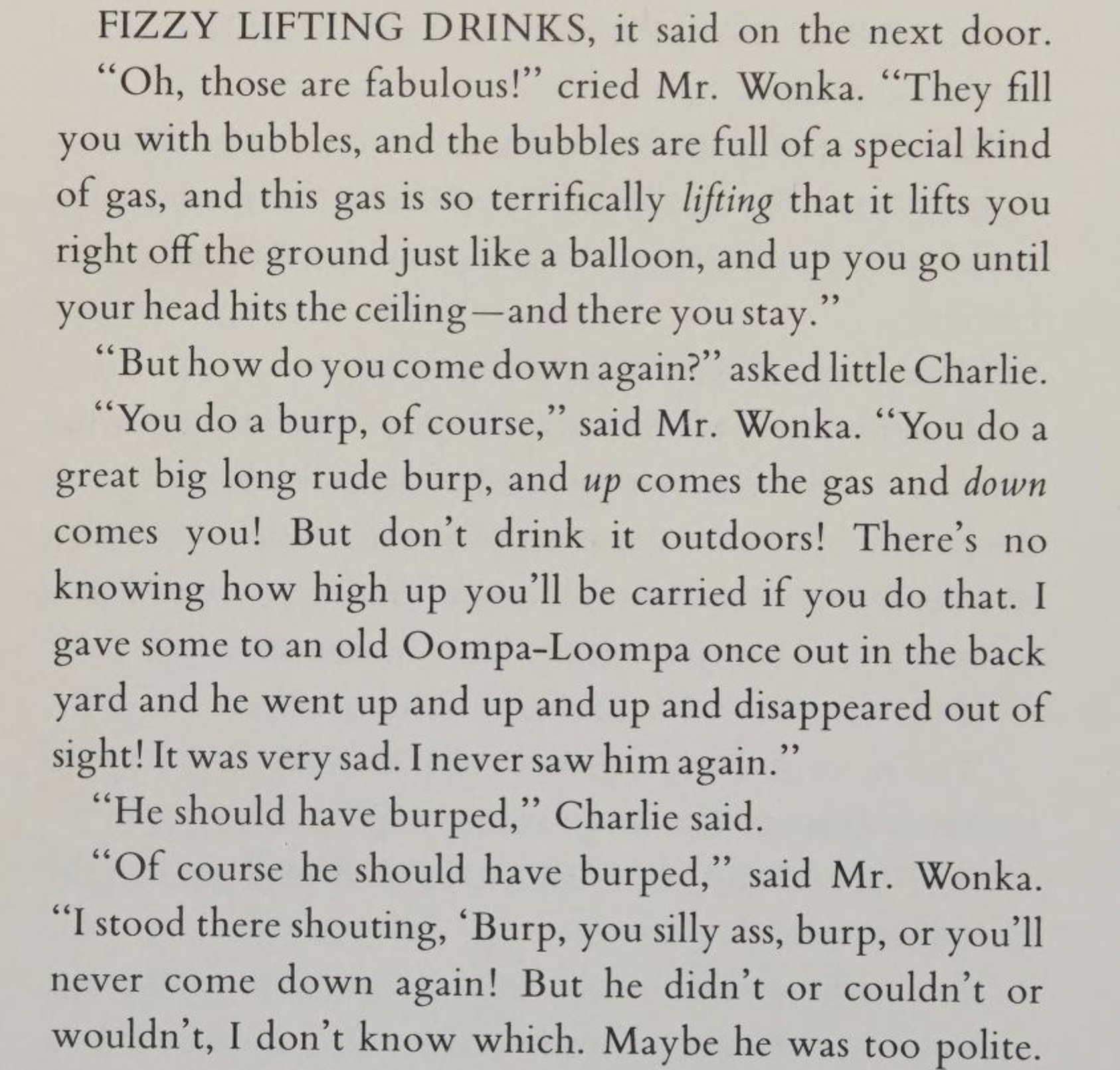
In this case you can picture the black man, finally getting away from this hellhole, and Wonka yelling at him not to be an ass. And I’m not being metaphorical here. I’m not saying that Oompa Loompas were like black people. They were black people. The characters constantly comment on how black they are.
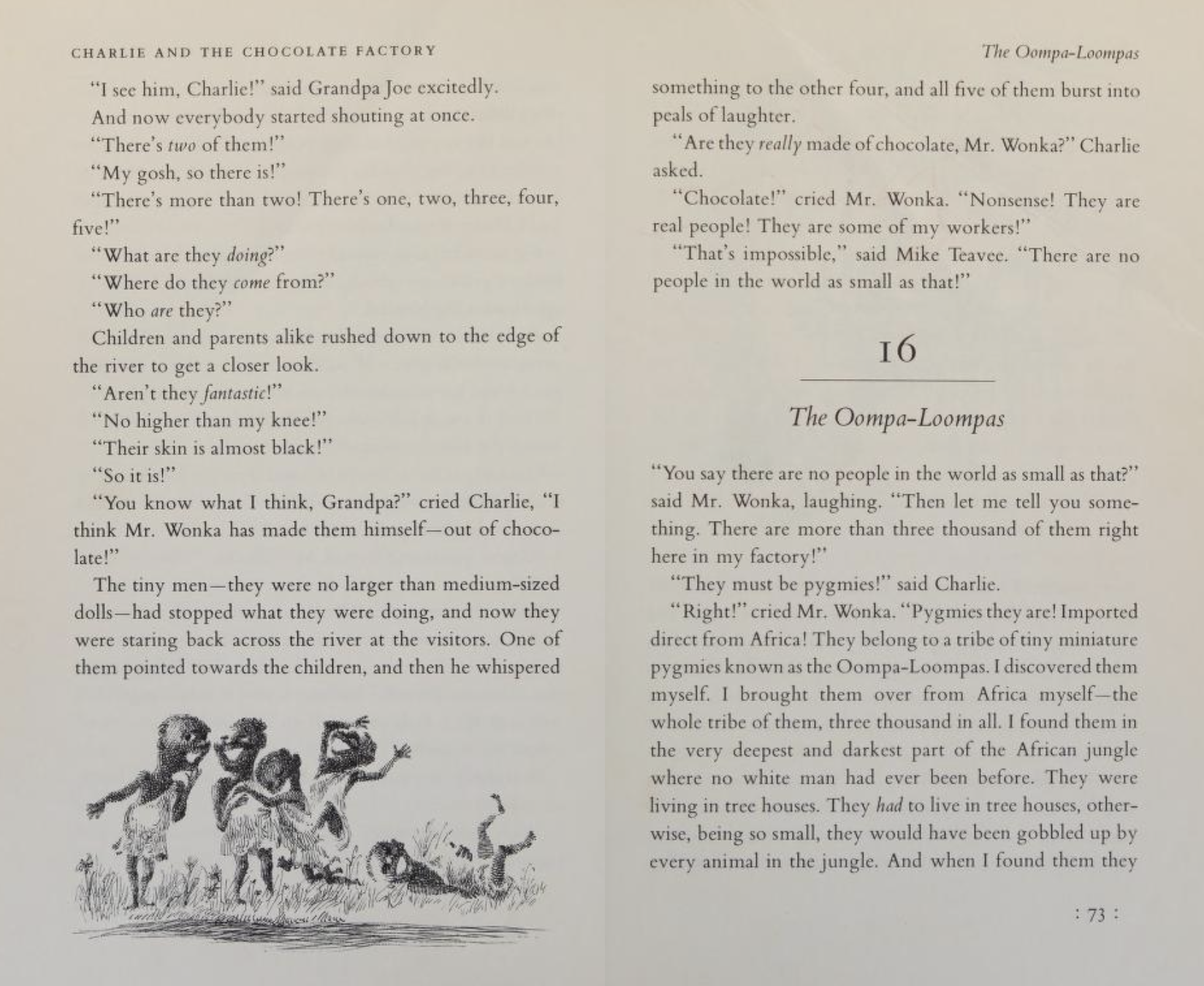
And again, it’s important to understand when this was. Martin Luther King gave his I Have A Dream speech in 1963. Charlie And The Chocolate Factory was released in 1964, and this was the version that people read until 1973. The popular film came out in 1971, selling even more of this demented version of the book.
If you say judge Dahl by the standard of his times, was Martin Luther King’s dream to work for cacao beans? Was that what Patrice Lumumba wanted for the people of the DRC? This was the 1960s, not the 1860s, and that whole ‘standard of their times’ argument is bullshit anyways. Whose standards? Black people were humans in the 1800s as well. None of the people being lynched or raped and thrown off boats were thinking “by the standards of my time, this is fine.” The dehumanization of colored people still continues today, when we write them out of history this way.

The racist version I’m sharing here was Charlie And The Chocolate Factory at the peak of its popularity. In 1972, Eleanor Cameron said it was “probably the book most read aloud by those teachers who have no idea, apparently, what other books they might read to the children.” People objected at the time, including the NAACP. Do you know what Dahl called this effort to impose standards on him? “Real Nazi stuff.”
In fact, Dahl had more sympathy for the Nazis, saying, “There is a trait in the Jewish character that does provoke animosity, maybe it’s a kind of lack of generosity towards non-Jews. I mean, there’s always a reason why anti-anything crops up anywhere; even a stinker like Hitler didn’t just pick on them for no reason.”
The Consequences Of Charlie
This book would have had real consequences. It wasn’t harmless, and him doing a find and replace under pressure didn’t make it all go away. When I show you these images it looks like history, an old forgotten edition, but this was what millions of children read. This was real. Just imagine being a child and seeing this image, and hearing these words:
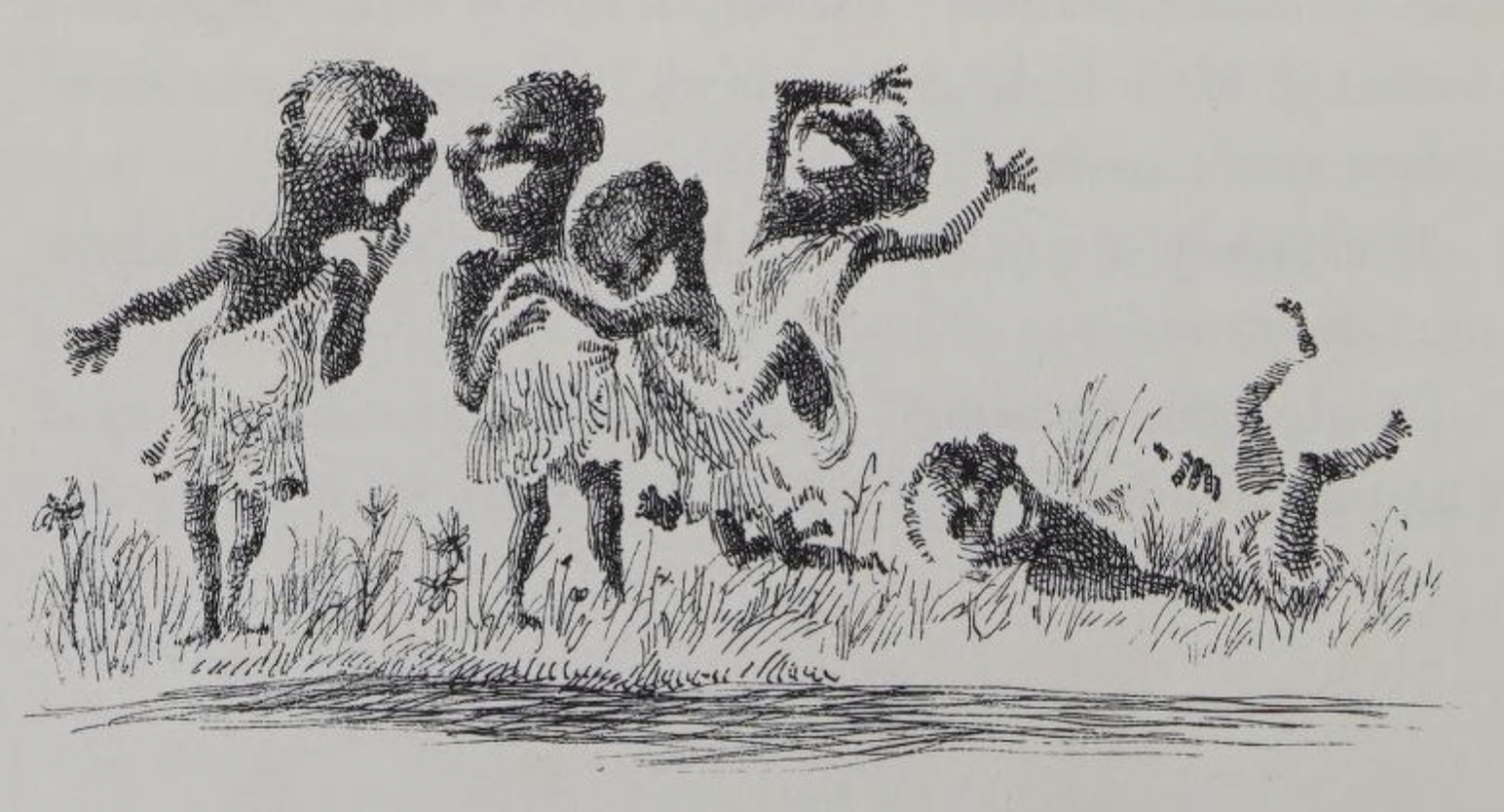
If you were a white child you could easily think what Veruca Salt said, “I want an Oompa-Loompa right away! I want to take it home with me! Go on, Daddy! Get me an Oompa-Loompa!”
Now imagine being a black child and reading this book. Dahl talked explicitly about blackness, about Africa. Places full of real human beings, full of children. Many of these children would have seen this very edition, and this very dehumanized version of themselves. What the actual fuck. This was real.
Find/Replace Because I Want The Movie Money
In response to a lot of pressure (what we today might call ‘cancel culture’) Dahl grudgingly changed the words in the book. He basically did a find/replace, changing color but not colorism.
Imagine if Hitler — under pressure from the film producers of Mein Kampf — simply changed the word ‘Jews’ to Jubijus, but everything else remained the same. This is what Dahl did with Charlie And The Chocolate Factory. And we ate it all up. This was one of my favorite books. In the 1980s, this gobstopper was given to me. I was only gobsmacked 30 years later, when I read the book to my own child.
Living With Strange Fruit
My daughter loves Charlie And The Chocolate Factory. She gets up and dances to the songs. I am conflicted AF. Dahl was one of my favorite authors and I have long looked forward to sharing him with my children. Now I’m like, what the fuck am I sharing? How much do I share? How do I explain?
It is only now that I understand that the songs are slave songs. But how do I explain that to a four-year old? The only thing I can say is that this book can be an exercise in thinking critically, but if I were black would I feel the same way? I really don’t fucking know. The cognitive dissonance is frankly ringing my head off.
We’ve talked about the not getting paid part, but how am I going to tell her that black people really were enslaved? How am I going to tell her that people really were transported like cargo? That Belgians cut off children’s hands and made their parents wear them? Where do I start? Where do I stop? Should we just read a different book? This is the cruel reality behind white fantasy-worlds, how do I introduce this to my child?
Am I saying cancel Roald Dahl? I don’t know. This is hard for me. I am a writer and Roald Dahl made me want to be a writer. I fucking love these books. But I can’t unsee what I have seen. How can you see these pictures and read these words and not be absolutely revolted? How does changing the names make it all go away?
The real cancel culture wasn’t “boohoo, my childhood author was a dick”, it was “I was taken from my mother and sold” because people like Dahl considered blacks subhuman and popular white culture just laughed along. And this racist culture continues to this day. We’re still ‘cancelling’ the humanity of colored people to preserve the estates of white folk, including the estate of Roald Dahl and his racist-ass book, Charlie And The Chocolate Factory.
I publish these articles early on Patreon, do a weekly round-up, and write exclusive shit that’s too personal for here.